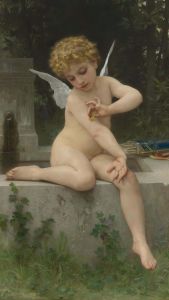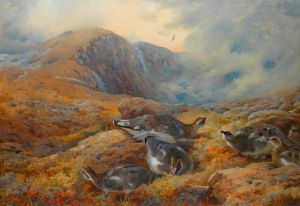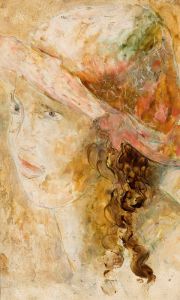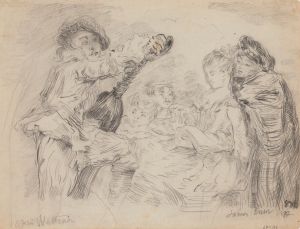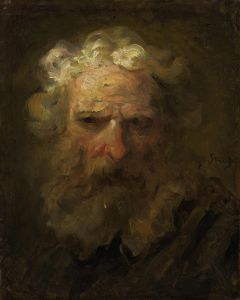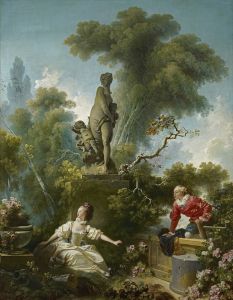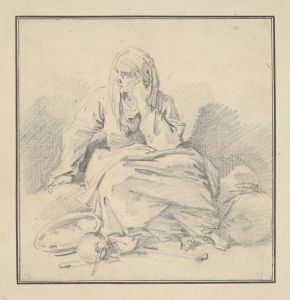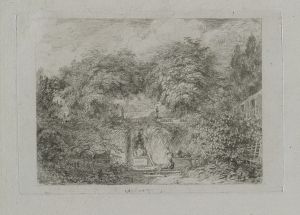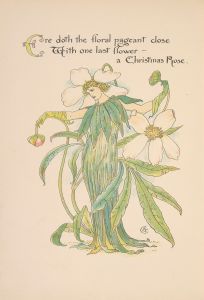
With Logistilla’s Guidance, Ruggiero Masters the Hippogriff
A hand-painted replica of Jean-Honoré Fragonard’s masterpiece With Logistilla’s Guidance, Ruggiero Masters the Hippogriff, meticulously crafted by professional artists to capture the true essence of the original. Each piece is created with museum-quality canvas and rare mineral pigments, carefully painted by experienced artists with delicate brushstrokes and rich, layered colors to perfectly recreate the texture of the original artwork. Unlike machine-printed reproductions, this hand-painted version brings the painting to life, infused with the artist’s emotions and skill in every stroke. Whether for personal collection or home decoration, it instantly elevates the artistic atmosphere of any space.
Jean-Honoré Fragonard, a prominent French Rococo painter, is known for his exuberant and fluid style, which often depicted scenes of romance, mythology, and playful eroticism. One of his works, "With Logistilla’s Guidance, Ruggiero Masters the Hippogriff," draws inspiration from the epic poem "Orlando Furioso" by Ludovico Ariosto. This poem, first published in the early 16th century, is a cornerstone of Italian literature and has inspired numerous artists and writers over the centuries.
The painting illustrates a scene from "Orlando Furioso," where the character Ruggiero, a knight, is guided by the sorceress Logistilla. In the narrative, Ruggiero is tasked with mastering a hippogriff, a mythical creature that is part horse and part griffin. The hippogriff symbolizes the challenges and adventures that Ruggiero must overcome in his quest. Logistilla, representing wisdom and guidance, assists him in this endeavor.
Fragonard's depiction of this scene captures the dynamic interaction between the characters and the mythical creature. His use of vibrant colors and fluid brushstrokes brings a sense of movement and vitality to the composition. The painting reflects the Rococo style's emphasis on lightness, elegance, and an imaginative approach to storytelling.
The Rococo period, during which Fragonard was active, was characterized by a departure from the grandeur and formality of the Baroque era. Instead, it embraced a more playful and decorative aesthetic, often focusing on themes of love, nature, and mythology. Fragonard's work is a quintessential example of this style, with its emphasis on beauty, emotion, and a sense of whimsy.
Fragonard's ability to convey complex narratives through his art is evident in "With Logistilla’s Guidance, Ruggiero Masters the Hippogriff." The painting not only illustrates a specific moment from "Orlando Furioso" but also encapsulates the broader themes of adventure, heroism, and the triumph of wisdom over chaos. The interaction between Ruggiero and Logistilla, as well as their engagement with the hippogriff, is rendered with a sense of intimacy and immediacy, drawing the viewer into the story.
While specific details about the painting's creation, such as its exact date and current location, are not widely documented, it remains an important part of Fragonard's oeuvre. His ability to blend narrative content with the stylistic elements of the Rococo period makes this work a significant example of 18th-century European art.
Fragonard's legacy as a master of the Rococo style is cemented by his ability to capture the imagination of his audience through both his technical skill and his storytelling prowess. "With Logistilla’s Guidance, Ruggiero Masters the Hippogriff" stands as a testament to his artistic vision and his contribution to the rich tapestry of art history.





